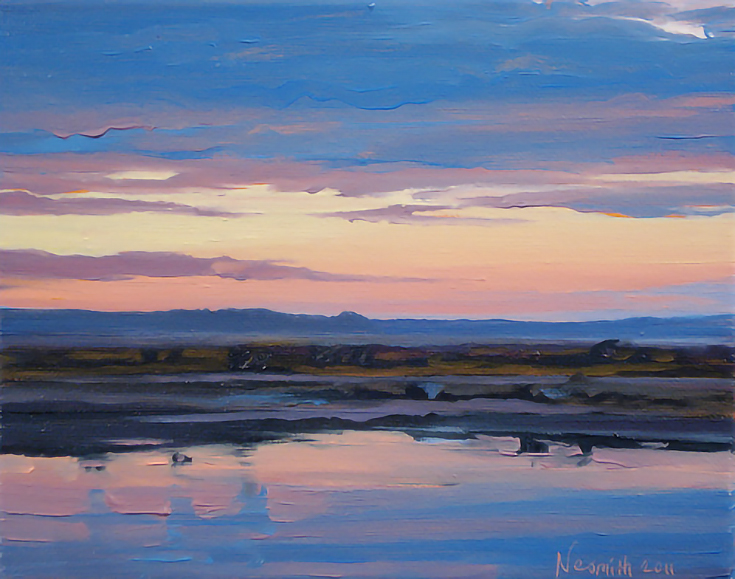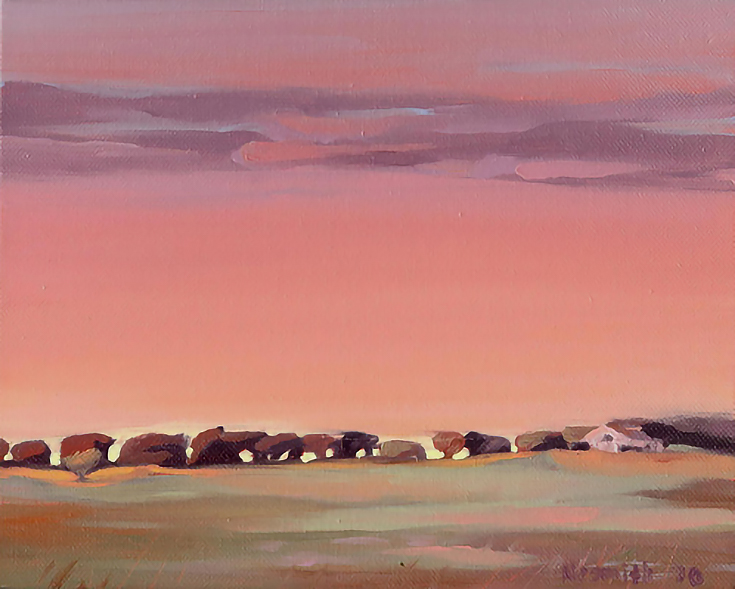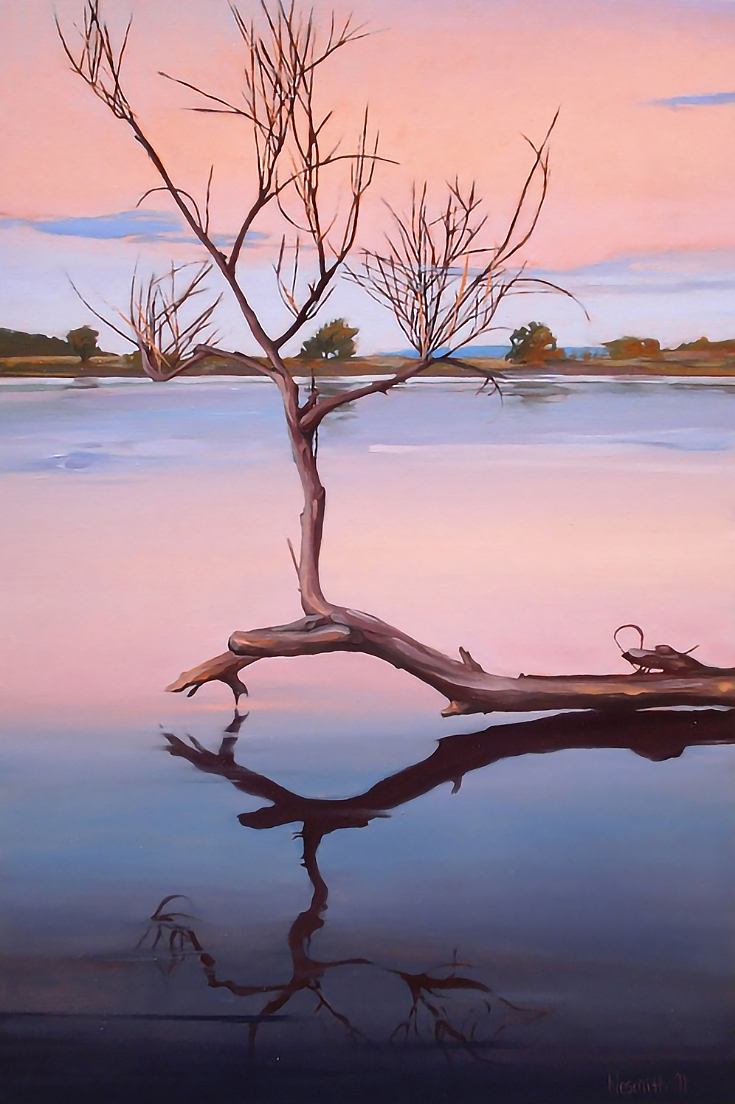I’ve always leaned towards landscape imagery in my paintings, but truth be told, the real subject of all of my work is light.
Like many artists before me, I am addicted to the magical glow of the early morning or late evening sunlight known as the “Golden Hour.” Masters like Corot and Inness made great use of the Golden Hour in their paintings, and I’ve spent most of my time as a painter trying to capture the beautiful light and colors from these transient, magical moments of daylight.
The Golden Hour occurs when the sun is about six degrees above or below the horizon. This happens during the first and last hour of daylight, so really there are two Golden Hours. During this time the light is soft and diffuse and the low angle of the sun creates long, dramatic shadows that drag across the landscape.
Because the sun is near the horizon the light travels through more of the atmosphere. This scatters the blue spectrum, leaving warm red and orange rays to illuminate the world. Clouds above range from soft reds and violets to deep blues.
This small oil painting, Sunrise, Trinity River East Fork, was painted at daybreak. The sky ranges from soft pinks to subtle oranges and yellows as you move up from the horizon.
The clouds near the ground were soft red-violets that changed to a deep blue at the top of the sky. Shadows and forms on the ground are cool blues and violets. I love how the reflection in the water unifies the scene and seems to erase the separation of Heaven and Earth.
To capture the rapidly changing colors at dusk or dawn it helps to premix several variations of colors before the moment arrives. If I’m painting on location I’ll try to show up an hour or so early to make sure I’m set up in time.
I tend to arrange colors on my palette in order from light to dark. That way as the light fades I can still distinguish the values even when the hues are no longer clear. I can then use my memory to quickly capture the fleeting effects of light.
To create the subtle transitions of color in First Light, Kaufman, TX, I pre-mixed tints of yellow, orange, pink, violet, and a few different greens.
I didn’t even paint for the first thirty minutes or so. Since the momentary effects of light during the Golden Hour may last only a few minutes and at most about an hour, I concentrated on mixing the colors I could see before they disappeared.
I held up different mixes on my palette knife to check them against the sky. As the hour waned and the light was lost, I used a charcoal pencil to sketch in a rough drawing of the scene and then painted the colors from memory. I painted very quickly using lots of medium to let the colors flow and blend into each other.
While the sky appears more uniformly blue during the afternoon, “Golden Hour” skies vary dramatically with a slight turn of your head.
Face away from the sun and the light envelops everything with a unifying, soft golden color. Face towards the sun and the sky blazes with fiery reds and oranges, while directly opposite the sky is still cool and dark. My favorite spot lies somewhere in between, where an orange or pinkish glow softly illuminates the sky.
Even when I’m not painting on location I often use the effect of this time of day in my work. I created this 36” x 24” painting, entitled The Fallen, in the studio, but I used the warm pink and light orange glow of morning to provide contrast against the deep blue sky reflected at the bottom.
To capture the radiance of the colorful sky I like to work on a warm-toned underpainting and let some of it show though semi-transparent glazes of color. This creates the impression that the light is emanating from the canvas itself and replicates the all over glow of the Golden Hour.
Catching the brilliant light display in the early morning can be a challenge for many of us. I often have to pull over on my way to work to snap a quick photo or make a few notes about the colors for future reference. I’ll often return to those spots on the weekend when I have a little more time to flesh out the scene.
But even though it can be a challenge to find time to paint at sunrise or sunset, the rewards speak for themselves. . . give it a try the next time you head out.
For more articles by Mark Nesmith, please visit paintdailytexas.blogspot.com.
This post may contain affiliate links.



